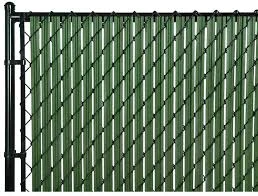Building a Tomato Cage Trellis A Guide to Successful Gardening
Growing tomatoes can be a rewarding experience, especially when you can enjoy the fruits of your labor. However, one of the challenges many gardeners face is how to support their tomato plants effectively. This is where the tomato cage trellis comes into play. It not only provides structural support but also enhances air circulation, reduces disease, and makes harvesting a breeze. In this article, we will explore the benefits of using a tomato cage trellis and provide step-by-step instructions on how to create one.
The Benefits of a Tomato Cage Trellis
1. Support for Growing Plants Tomato plants can become quite heavy as they grow and produce fruit. Using a cage or trellis will support the weight of the branches and prevent them from breaking. This support is crucial for indeterminate varieties, which continue to grow and produce throughout the season.
2. Improved Air Circulation A well-structured trellis allows for better air circulation around the plants. This is essential for preventing fungal diseases that thrive in damp, densely packed foliage.
3. Easier Harvesting With plants elevated above the ground, it’s much easier to access the fruits. You can avoid having to rummage through foliage and dirt, which may harbor pests and diseases.
4. Space Saving Vertical gardening techniques, like using a tomato cage trellis, help maximize space in your garden. This is particularly useful in small gardens where every square foot counts.
5. Aesthetic Appeal A tomato cage trellis can enhance the overall look of your garden. With the right design, it can become a decorative element as well as a functional one.
How to Build a Tomato Cage Trellis
Building your tomato cage trellis is a straightforward process that requires minimal materials and tools. Here’s a step-by-step guide
tomato cage trellis

Materials Needed - Wire mesh fencing or garden stakes - Heavy-duty wire or string - Wire cutters - Optional wooden posts or rebar for additional support
Instructions
1. Select a Location Choose a sunny spot in your garden that receives at least 6-8 hours of sunlight daily. Ensure the soil is well-draining and fertile.
2. Prepare the Structure If you’re using wire mesh fencing, cut it into a circular shape, roughly 3-4 feet in height and diameter. If using garden stakes, you can create a rectangular or square frame, ensuring it stands 5-6 feet tall for ample support.
3. Secure the Base If the cage is freestanding, insert stakes or poles into the ground to provide stability. Make sure they are deep enough (about 12 inches) to withstand wind and the weight of the growing plants. The edges should be flush with the ground for stability.
4. Attach the Wire If using wire mesh, attach it to your posts or stakes using heavy-duty wire or string. Ensure that the mesh is tight and secure, as this will bear the weight of the tomatoes and support their growth.
5. Plant Your Tomatoes Once your cage is constructed, it’s time to plant your tomatoes. Space them appropriately, usually about 18 to 24 inches apart, depending on the variety. As the plants grow, gently weave their stems through the cage or tie them to the structure for additional support.
6. Maintenance Regularly check your trellis for any signs of wear or damage. As the plants grow, prune any overly dense foliage to improve airflow and keep your tomatoes healthy.
In conclusion, a tomato cage trellis is an essential tool for any tomato gardener. Not only does it provide the necessary support for your plants, but it also enhances their growing environment. With a little effort in building and maintaining your trellis, you can look forward to a bountiful harvest of delicious tomatoes. Happy gardening!
















